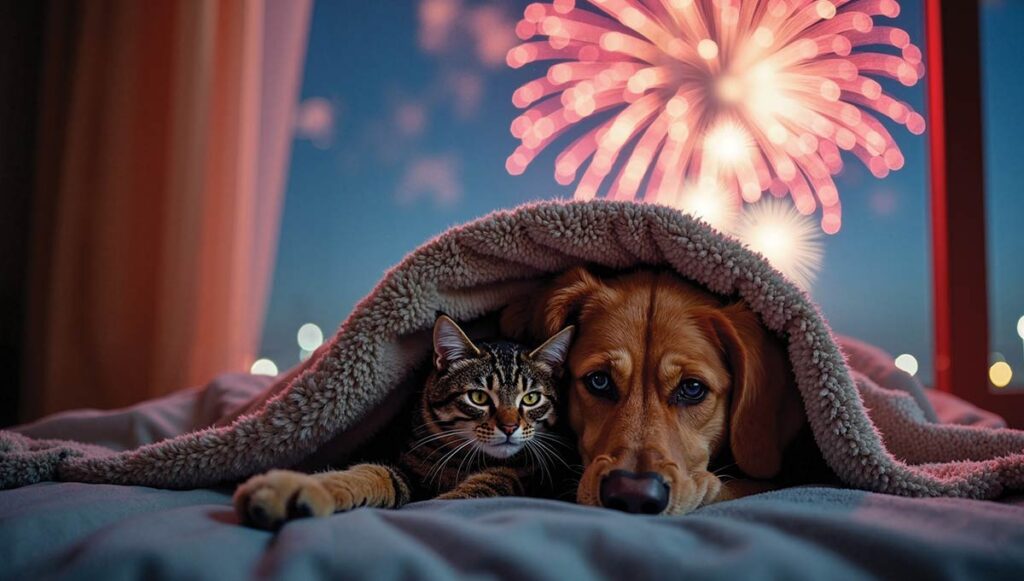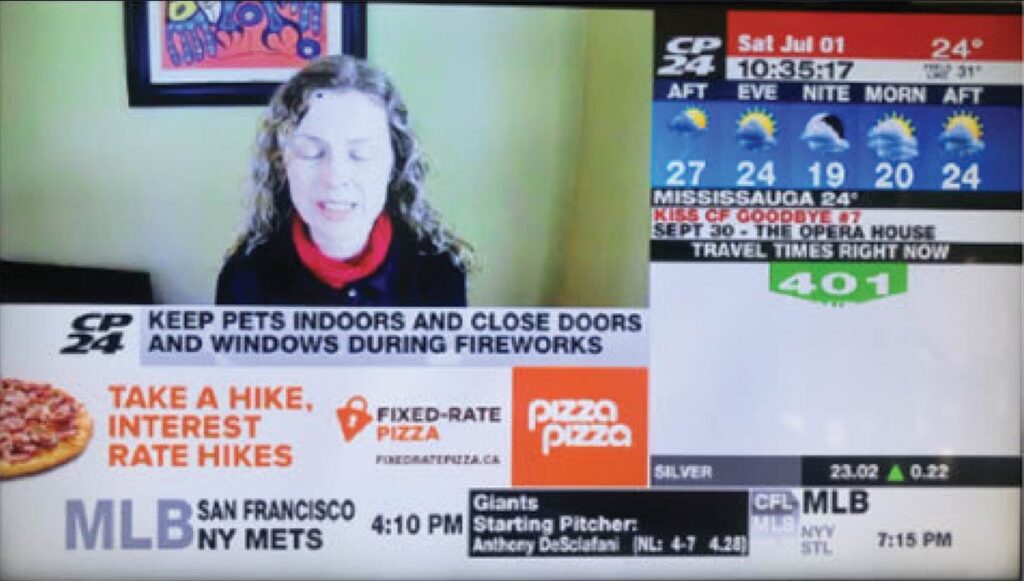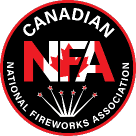Click to Download the Full Publication
Celebrating with Sparkle
The Case for Responsible Fireworks Usage
Fireworks have been a beloved tradition in minority communities across Canada and around the world for centuries. These dazzling displays of light and sound have brought people together to celebrate cultural festivals, national holidays, and joyous occasions. However, concerns have been raised about potential health and environmental impacts, leading some to call for outright bans on fireworks. This paper aims to dispel myths and misconceptions, presenting a compelling case for responsible fireworks usage that balances community enjoyment with thoughtful precautions.
The Cultural and Economic Significance of Fireworks
Fireworks, deeply intertwined with our cultural identity and traditions, have become beloved part of how we come together as a nation. They hold immense significance for many Canadian communities, symbolizing the triumph of good over evil in celebrations like the centuries old tradition Diwali.
To restrict fireworks would not only diminish a cherished Canadian pastime but also impede the cultural expression of millions of Canadian Hindus and Sikhs. Such a measure could lead to increased marginalization and adverse mental health impacts on these communities, whose rich traditions contribute to the vibrant tapestry of our nation’s diversity. As Canadians, we must welcome traditions that unite us while celebrating the multiculturalism that makes our country truly remarkable.
Moreover, fireworks displays are a significant economic driver for many cities and towns. These events attract tourists, boost local businesses, and create vibrant community experiences. In Vancouver, BC the annual Celebration of Light fireworks competition generates an estimated $10 million for the local economy for each night of the event. This includes direct, indirect, induced and other supported economic impacts locally and beyond.
Collaborative Strategies for Safe and Informed Fireworks Use
Communities across Canada and beyond have been working with the fireworks industry and with health officials to ensure that, through proper communication, education, and responsible usage, the concerns surrounding backyard fireworks and perceived health impacts are addressed in a pragmatic manner and balanced approach that accommodates everyone’s needs.

Pet Post Traumatic Stress Disorder (PTSD)
Thunder Comparison
It is well known that pets often experience anxiety and distress during thunderstorms, which produce loud and unexpected noises similar to fireworks. If pets can gradually adapt to thunder (which is always unplanned and unpredictable) it is plausible to assume that they can also adjust to the predictable sounds of backyard fireworks on designated days and times on such days as Canada Day, New Years Eve, Diwali or Lunar New Year.
Parental Supervision
Responsible pet owners exercise parental supervision to safeguard their pets’ comfort during events that might disturb them, including fireworks displays. By ensuring that pets are indoors and comforted during these times, we significantly minimize their exposure to potential stress triggers. This recommendation has been steadfastly encouraged by various animal and pet advocacy groups, including the Toronto Humane Society.
Predicted Timing
Unlike unexpected loud noises (such as thunder), backyard fireworks can be scheduled and anticipated. This allows pet owners to take necessary precautions, such as creating a quiet and comfortable space indoors, which can help mitigate any potential distress for our pets.
Regulated Over-the-Counter Fireworks
Backyard fireworks are commonly available and are often designed to be less audible than professional fireworks displays. Residents choose these regulated options to celebrate special occasions and minimize disturbances.
Community Preparedness and Awareness
Responsible pet owners and community members can take proactive steps to ensure a peaceful environment during fireworks displays. This includes:
Neighbour Notification
To foster a sense of community responsibility, it is advisable to inform neighbours about planned fireworks displays in advance. This gesture helps those with pets to be better prepared to manage their pets reactions and ensure a peaceful environment for all residents.
Circulation of Policies
Implementing a clear policy that outlines guidelines for the use of backyard fireworks and ensuring it is circulated among all community members can further promote responsible usage and thoughtful consideration for pets and their owners.
Proactive Training
Collaborating with local fire departments to offer proactive training sessions on managing pets during fireworks displays can empower pet owners to take necessary steps to ensure their pets well being. All the above can be leveraged through the CNFA’s Be a Good Neighbour Program, which provides materials to assist communities at no charge to promote the safe and responsible use of fireworks.
All the above can be leveraged through the CNFA’s Be a Good Neighbour Program, which provides materials to assist communities at no charge to promote the safe and responsible use of fireworks.

Real Data and Community Consideration
Incident Data
Before jumping to conclusions, it is essential to evaluate real data regarding incidents of pet distress caused by backyard fireworks. Anecdotal evidence might not accurately represent the larger context, and analyzing comprehensive data can provide a more informed perspective on the issue.
Community Harmony
Communities across the country value their unity and harmony. Residents with pets and those without desire a peaceful environment. By adhering to responsible usage practices and maintaining open communication, we can ensure that our celebrations do not inadvertently disrupt our shared sense of tranquillity.
Mental Health Impacts
In a far-reaching letter signed by over 20 Psychiatrists in the London community, they asserted that they heard the concerns that citizens were advocating for a complete ban on fireworks with residents raising concerns about the impact of backyard fireworks on the mental health of individuals and pets. These concerns involved triggering PTSD symptoms, anxiety and sleep disturbances due to fireworks. As psychiatrists who routinely work on issues of PTSD and mental health, the group of Doctors wished to contribute further evidence to the municipal government for consideration:
PTSD is a mental health condition triggered by exposure to an actual or threatened death, serious injury, or sexual violence either directly or indirectly. Traumatic events can happen as a single or repeated exposure. Common symptoms include unwanted thoughts or dreams of the trauma, physical responses (such as difficulty breathing), strong negative emotions (such as fear, anger, guilt or shame), and a loss of interest in doing things once enjoyed. In severe states, the individual may start to believe their environment is a threat and benign stimuli like noise, smell, sight, physical proximity, etc., can cause visceral reactions leading to retriggering a trauma response.
People with moderate to severe PTSD constantly live in fear; they are anxious, hypervigilant, irritable, and have sleep disturbances, and this can lead to devastating consequences such as loss of job, break up in families, depression, substance use, and even suicide.
These concerns are serious; however, the Doctors asserted that banning fireworks would not address the issues those with PTSD face.
A recent survey by Statistics Canada on mental health and stressful events clearly cites sexual assault as the most commonly reported worst event among those diagnosed with PTSD. Several other traumatic events are mentioned. The word “fireworks” does not appear in the document, neither as a cause nor a trigger for PTSD.
It has also not been the Doctor’s experience, nor were they aware that fireworks have been a significant cause of escalation in Emergency Room presentations or help-seeking to crisis lines due to PTSD symptoms.
While the Doctors do not discount the fact that some individuals with PTSD may be hyper-vigilant and all loud noises may be a trigger, banning loud noises is unlikely to be a cure or even a solution for PTSD symptoms. The evidence based treatment for PTSD is an integrated approach of pharmacological and psychosocial treatments: this includes reprocessing for traumatic events and creating new associations for neutral triggering stimuli. For example, understanding the association between fireworks and the rituals of Diwali may help shift the traumatic association with fireworks, especially as Diwali fireworks can be anticipated in advance.
The Doctors asked the municipality carefully differentiate between anxiety symptoms and anxiety disorders. The former is more widespread and transient whereas the latter is a persistent condition usually assessed and diagnosed by a professional and requiring professional treatment.
The Doctors urged the municipal government to consider the actual evidence on triggers of PTSD and the fact that they cannot realistically eliminate all potential triggers for PTSD, nor is such an approach the most appropriate or helpful solution for PTSD (just as banning airplanes is not the solution for overcoming the fear of flying, even if the sight or sounds of airplanes can trigger panic attacks).
Furthermore, the group of Doctors urged the municipal government to consider that the vast majority of fireworks during Diwali celebrations are small-scale, low-budget sparklers and spinning wheels.
A complete ban therein would seem excessive and punitive, and would directly impact the ability of the Hindu and Sikh community to practice their own culture and religious beliefs. The Doctors added that it would increase marginalization, stigma, and stress, and thus will likely increase adverse mental health outcomes in the Hindu and Sikh population. As a result, the city’s mental health services will likely be taxed and impacted even further.
In the end, the municipality decided not to ban fireworks based on the merits and evidence brought forward by the group of 20+ Doctors.
Air Pollution
In a report provided to the City of London, data from Ontario’s Ministry of Environment was used. The range of data is from a 5 year period: Jan 1, 2018 to Dec 31, 2022. The data included the Fine Particulate Matter (PM2.5) as the variable of choice to measure pollution and AQI degradation. AQI research discusses Fine Particulate Matter (FPM) that is harmful to the respiration system. The chart below shows the monthly average over the entire period varies but never exceeds 10. According to the California Air Resources Board, any value below 12 is considered very good quality air.

Therefore, based on these findings, there is no statistical proof that backyard fireworks, or for that matter, commercial fireworks contribute to AQI degradation. Of note, the months of October and November (typical months for Diwali), the PM2.5 indicator is near its lowest level.
A recent study published independently measured the level of fine particulate matter in the air after a 30 minute fireworks show. Results and findings show limited to smoke which dissipates quickly according to air quality specialist Jean-Luc Allard.
Call to Action Embracing Responsibility and Inclusion
In the spirit of unity and respect, we call on municipalities and communities across Canada to adopt and promote responsible fireworks usage policies. By doing so, we will preserve fireworks’ joy and tradition while ensuring the safety, health, and well-being of all community members.
To learn more and join the initiative for responsible fireworks usage, visit the Canadian National Fireworks Association of Canada.
Click to Download the Full Publication









